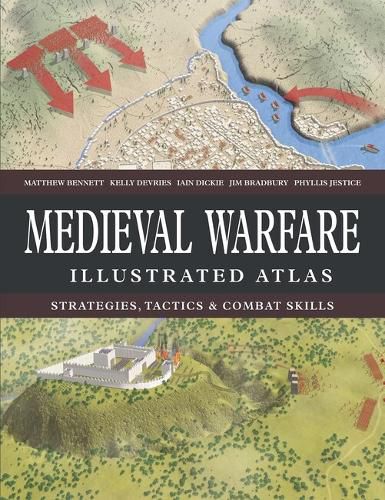Readings Newsletter
Become a Readings Member to make your shopping experience even easier.
Sign in or sign up for free!
You’re not far away from qualifying for FREE standard shipping within Australia
You’ve qualified for FREE standard shipping within Australia
The cart is loading…






Why were Welsh longbowmen and Italian mercenaries more effective in battle than French armoured knights? How able were the crusaders? What is the difference between chain mail and scale mail? Medieval Warfare Illustrated Atlas describes combat in what has been characterised as the 'age of chivalry'. The book explores the tactics and strategy required to win battles with the technology available and points out how the development of such weapons technology changed the face of the battlefield. Divided into five sections, the text begins with the foot soldier and the mounted soldier, the equipment they wore and used, and how they fought together as a unit. The third section discusses how these units were used together on the battlefield, and the importance of a general correctly disposing his troops before the battle began. The fourth section looks at siege warfare, while the final chapter covers naval warfare, from the ships to the weapons the soldiers carried to the major encounters of the period. Using specially commissioned artworks to illustrate the battles, equipment and tactics of the era, Medieval Warfare Illustrated Atlas shows in detail the methods by which armies gained and lost ascendancy on the battlefield. This is an essential companion for any reader interested in medieval warfare.
$9.00 standard shipping within Australia
FREE standard shipping within Australia for orders over $100.00
Express & International shipping calculated at checkout
Why were Welsh longbowmen and Italian mercenaries more effective in battle than French armoured knights? How able were the crusaders? What is the difference between chain mail and scale mail? Medieval Warfare Illustrated Atlas describes combat in what has been characterised as the 'age of chivalry'. The book explores the tactics and strategy required to win battles with the technology available and points out how the development of such weapons technology changed the face of the battlefield. Divided into five sections, the text begins with the foot soldier and the mounted soldier, the equipment they wore and used, and how they fought together as a unit. The third section discusses how these units were used together on the battlefield, and the importance of a general correctly disposing his troops before the battle began. The fourth section looks at siege warfare, while the final chapter covers naval warfare, from the ships to the weapons the soldiers carried to the major encounters of the period. Using specially commissioned artworks to illustrate the battles, equipment and tactics of the era, Medieval Warfare Illustrated Atlas shows in detail the methods by which armies gained and lost ascendancy on the battlefield. This is an essential companion for any reader interested in medieval warfare.